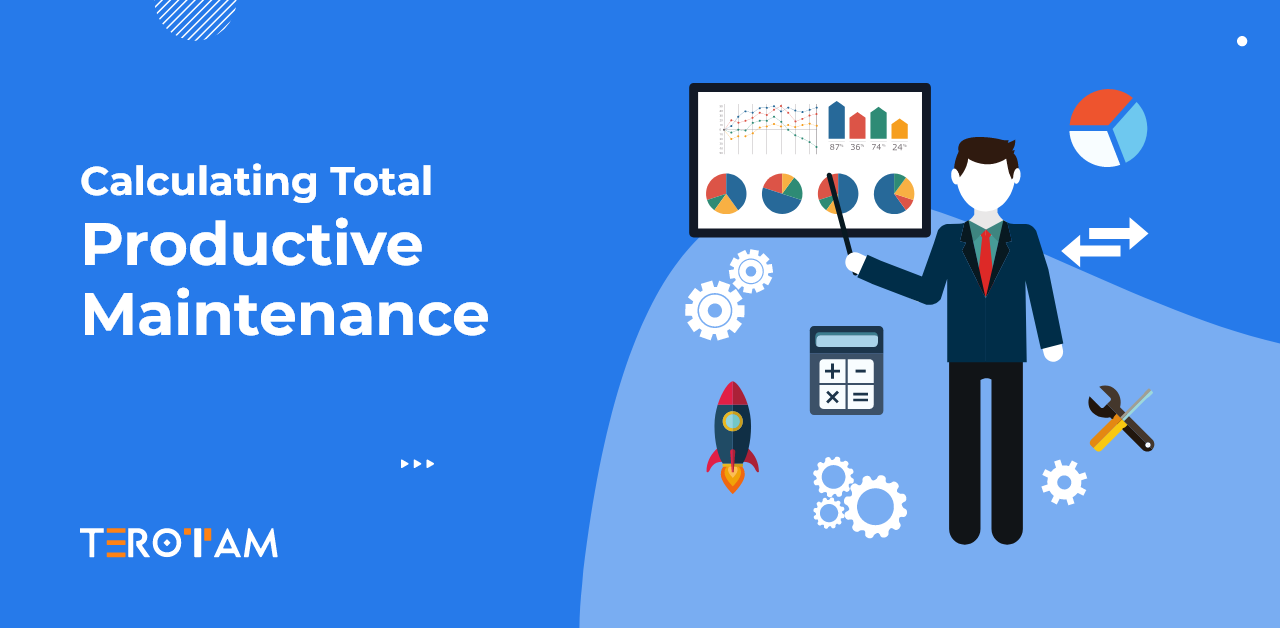Total Productive Maintenance (TPM) is a critical strategy for maximizing the efficiency and productivity of manufacturing equipment. It involves all employees in the maintenance process, aiming to reduce downtime and improve equipment reliability. To calculate TPM effectively, understanding key metrics and applying them correctly can help organizations optimize machine performance and boost overall productivity.
Here’s a detailed guide on how to calculate TPM.
Core TPM Metrics
Before diving into the calculations, it’s important to understand the key metrics involved in TPM. These include:
- Overall Equipment Effectiveness (OEE): The most crucial metric in TPM, it evaluates how well equipment is performing in comparison to its full potential.
- Availability: Measures the percentage of time equipment is available for production.
- Performance Efficiency: Measures how efficiently equipment operates, compared to its ideal speed.
- Quality Rate: Measures the number of good-quality products produced compared to the total number of products made.
These metrics together provide a complete view of asset effectiveness and overall performance.
Calculating Overall Equipment Effectiveness (OEE)
OEE serves as the foundation of TPM and is a comprehensive metric for measuring manufacturing efficiency. To calculate OEE, multiply the key components: Availability, Performance Efficiency, and Quality Rate.
Formula:
OEE=Availability×Performance Efficiency×Quality Rate
Each component is explained as follows:
Availability: This is the percentage of time that the equipment is available for production.
Availability = Operating Time / Planned Production Time × 100
Here, Operating Time refers to the time the machine is running, while Planned Production Time is the total time allocated for production.
Performance Efficiency: This measures the actual production rate compared to the machine’s optimal production rate.
Performance Efficiency = Actual Production Rate / Maximum Production Rate × 100
Here, Actual Production Rate is the output produced in a set period, while Maximum Production Rate refers to the ideal output the machine can achieve.
Quality Rate: This measures the percentage of good quality products compared to the total produced.
Quality Rate = Good Products / Total Products × 100
Here, Good Products are those meeting quality standards, while Total Products include both good and defective units.
Key TPM Metrics Beyond OEE
In addition to OEE, TPM relies on other important metrics to evaluate maintenance performance.
Mean Time Between Failures (MTBF)
MTBF is a metric used to assess the reliability of equipment by calculating the average time between failures.
MTBF = Total Operating Time / Number of Failures
A higher MTBF indicates better machine reliability, which TPM aims to improve by preventing failures through proactive maintenance.
Mean Time to Repair (MTTR)
MTTR measures the average time required to repair equipment after a failure. Reducing MTTR minimizes downtime and ensures quicker recovery.
MTTR = Total Repair Time / Number of Failures
The faster the repair, the less downtime the equipment experiences, which is a key objective of TPM.
Total Preventive Maintenance Time
This metric tracks the time spent on scheduled preventive maintenance activities and is a vital component of a successful TPM strategy.
Total Preventive Maintenance Time = Total Scheduled Maintenance Time
Focusing on preventive maintenance reduces unplanned downtime and improves equipment reliability.
Steps to Calculate TPM in Practice
Step 1: Gather Data
Accurate data is essential for calculating TPM. Track:
- Operating time and planned production time
- Actual and maximum production rates
- Good and total products produced
- Downtime, failures, and repair times
- Preventive maintenance activities
Consistently collecting this data is critical to obtaining accurate calculations and identifying trends over time.
Step 2: Calculate OEE
Calculate each machine’s Availability, Performance Efficiency, and Quality Rate. Then, multiply these three values to obtain the OEE for each piece of equipment.
Step 3: Calculate MTBF and MTTR
Next, calculate MTBF and MTTR to evaluate reliability and recovery times. This helps identify areas where maintenance practices need to improve.
Step 4: Calculate Preventive Maintenance Time
Summing up the time spent on scheduled maintenance helps measure the effectiveness of preventive actions in reducing unplanned downtime.
Step 5: Analyze Results
Review the calculated TPM values to identify weaknesses in the maintenance process. Low OEE, high MTTR, or poor quality rates may indicate issues that need addressing. Continuous evaluation allows for informed decisions to improve productivity and reduce downtime.
Key Benefits of Calculating TPM
- Improved Equipment Efficiency: Calculating TPM provides insights into equipment performance, highlighting areas for optimization.
- Reduced Downtime: Identifying and addressing causes of downtime helps keep machines running efficiently.
- Cost Savings: With better machine performance and reduced downtime, maintenance costs decrease.
- Enhanced Product Quality: Focusing on equipment reliability and defect prevention improves the quality of products produced.
- Employee Engagement: TPM encourages active participation from employees in maintenance efforts, fostering a culture of collaboration and improvement.
Conclusion
Calculating Total Productive Maintenance (TPM) is essential for improving equipment efficiency and reducing operational costs. With the evaluation of key metrics such as OEE, MTBF, MTTR, and preventive maintenance time, organizations can gain valuable insights into their maintenance performance. Proper implementation of TPM not only optimizes machine reliability but also contributes to a more efficient production process.
If you need guidance or support with TPM calculations and improving your maintenance practices, feel free to reach out to us at contact@terotam.com. We’re here to help you enhance your operations and achieve long-term success.








